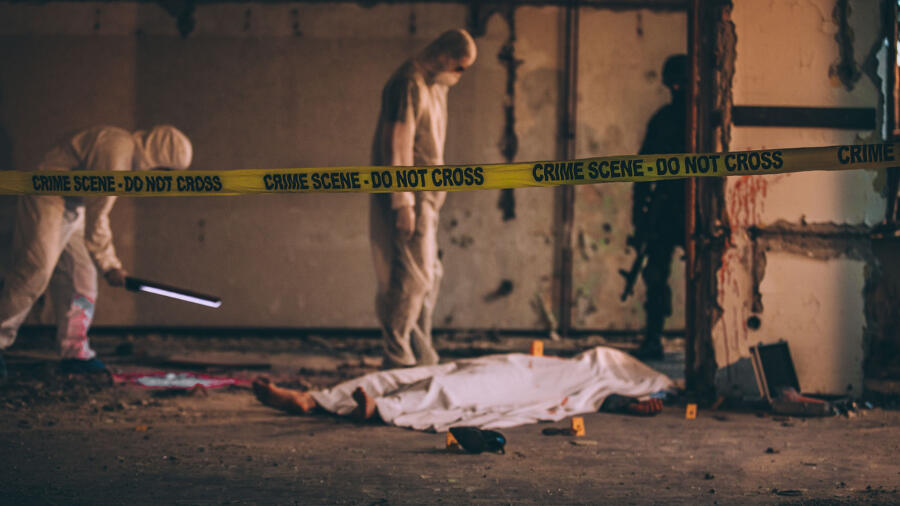When people think of death investigators, they often imagine Hollywood’s glamorous portrayals—sleek labs, instant DNA results, and dramatic one-liners. But according to Barbara Butcher, who spent over 20 years as a leading death investigator in New York City, the truth is far more complex—and far more human.
Through her powerful memoir What the Dead Know, Butcher pulls back the curtain on a career that intertwined with tragedy, science, and justice. Let’s explore seven shocking truths about the work life of a death investigator, straight from someone who’s lived it.
Crime Scenes Reveal Lives, Not Just Deaths
While many people see only death, Butcher always looked for signs of life. At each scene, she noted what made someone human—the books they read, the shows they watched, and the photos on their refrigerator.
“These people weren’t just victims,” she explained. “They were entire worlds. Every scene told a story.”
By focusing on the lives once lived, Butcher brought dignity to even the darkest moments.
TV Dramatizations Miss the Real Work
Despite what TV crime dramas portray, most death investigations don’t rely on magical tech. They begin with sharp eyes, active listening, and the ability to stay calm in chaos.
“Real investigations depend on careful observation and asking smart questions,” Butcher noted. “DNA matters, but it doesn’t replace instinct.”
In one case, a glance at a closed closet revealed a third body in what first seemed like a double homicide. That discovery changed everything, proving how one small detail could shift the course of an entire case.
Jumping to Conclusions Can Destroy a Case
Assuming the nature of a death—before evidence speaks—can derail investigations.
“If you walk into a scene thinking ‘murder,’ your brain starts forcing the evidence to match,” Butcher warned. “That’s a huge mistake.”
She stressed the need to stay neutral until facts form the narrative. More than once, she walked into a scene that screamed homicide—only to learn later it was accidental or self-inflicted.
Technology Has Radically Transformed Forensics
In 1992, Butcher entered a world of Polaroid cameras and faxed reports. But after 9/11, forensic science leapt forward.
“9/11 forced us to innovate,” she recalled. “We identified people using microscopic bone fragments.”
That tragedy accelerated advancements in DNA extraction, digital imaging, and record-keeping. Today’s death investigators benefit from those innovations, yet Butcher insists that technology is only as useful as the hands that wield it.
Some Cases Haunt Forever
One crime scene that never left her involved killers George Cobo and Tony Lee Simpson. Butcher walked into an apartment and saw a sapphire carpet soaked in blood. One victim’s head was nearly severed. The other had fought back, leaving behind clear defensive wounds.
“The violence was shocking,” she remembered. “But what haunted me most was the arrogance of the killers—they thought they’d gotten away with it.”
They funded a shopping spree using their victims’ credit cards until a lovers’ quarrel led to their arrest.
Systemic Injustice Leaves Lasting Scars
The case of Arohn Kee, a sadistic serial rapist and murderer, exposed a disturbing truth: some victims receive less attention because of their background.
Kee’s first victim was only 13 years old. She wore a New Kids on the Block watch. Her body was found, but the investigation stalled.
“They lived in public housing. They were poor and people of color,” Butcher said. “That’s why no one cared—until it was too late.”
That injustice still infuriates her. It also highlights a problem that continues to plague law enforcement.
Ground Zero Was the Most Emotional Scene of All
In the aftermath of the 9/11 attacks, Butcher stood atop the wreckage of the Twin Towers. Amid crushed desks and broken picture frames, she saw more than debris—she saw lives.
“It wasn’t just rubble,” she said. “It was thousands of stories, interrupted.”
Death investigators worked around the clock to identify victims using the tiniest DNA samples. Their mission wasn’t just scientific—it was deeply personal. Families waited. Hope hung in the air, mixed with dust and silence.
FAQs About the Work Life of a Death Investigator
What does a death investigator actually do?
A death investigator examines scenes, collects evidence, interviews witnesses, and helps determine cause and manner of death—often in collaboration with forensic pathologists.
Is death investigation like it is on TV?
Not really. TV often exaggerates or simplifies the process. Real cases rely on patience, observation, and methodical documentation, not instant lab results.
How do investigators handle emotionally difficult cases?
Professionals like Butcher rely on training, routine, and peer support. Still, some cases—especially involving children or injustice—leave lasting emotional scars.
Has forensic science improved in recent decades?
Dramatically. Advances in DNA analysis, digital imaging, and crime scene technology have revolutionized how investigators solve cases.
Do death investigators only work on murders?
No. They investigate all unattended deaths, which include suicides, accidents, overdoses, and natural deaths under suspicious circumstances.
Why is Barbara Butcher’s story so unique?
She’s one of the few women to hold a senior role in death investigation in NYC, and her ability to connect human stories with forensic science sets her apart.

